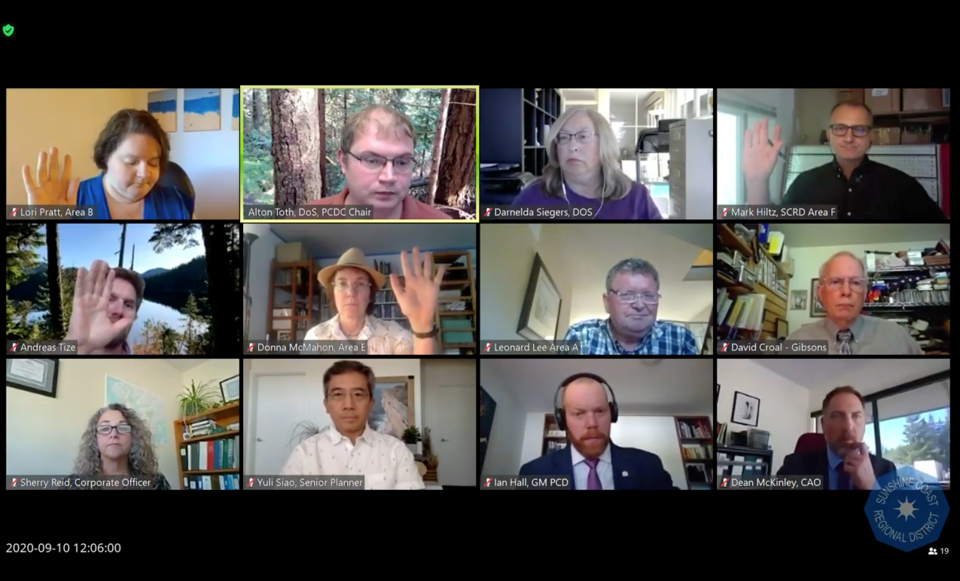Sunshine Coast Regional District (SCRD) directors have rejected a proposal for a subdivision development north of the highway in Halfmoon Bay.
Rural directors unanimously voted Sept. 10 to abandon zoning and Official Community Plan (OCP) amendments that would have allowed the Secret Cove Heights proposal to move ahead in its current form.
While the Halfmoon Bay Advisory Planning Commission (APC) does not support the amendments and SCRD staff have consistently recommended against them, directors have been divided on the proposal for the 19-hectare property at the end of Stephen’s Way, about 2.5 kilometres north of Highway 101.
In June, Halfmoon Bay director and chair Lori Pratt, Area D director Andreas Tize and Len Lee, director for Pender Harbour/Egmont, voted for the proposal to proceed to second reading, which triggered a public hearing. At the time, Pratt said she was “torn” on the project, and said additional feedback was needed from the community.
Elphinstone director Donna McMahon and West Howe Sound director Mark Hiltz maintained their opposition to the proposal.
As part of the public hearing process, 35 people submitted opinions supporting the amendments and 15 were opposed.
At the Sept. 10 planning committee meeting, all directors save for Lee expressed their support for the staff recommendations that “the proposed development is contradictory to the policies of the OCP and is inappropriate for the location.”
Pratt said she was still split on the proposal. “I know it’s been a long process but at the end of the day, I think I need to fall back to what the OCP stands for, what the APC has said and what staff has recommended.”
Tize also acknowledged he had been “on the fence” about the project and called its intentions “laudable,” but ultimately agreed with staff. “There’s no comprehensive plan to indicate that his will be more than just another subdivision in the end,” he said. He also objected to developing a car-dependent community far from a transportation hub.
The applicants were seeking to change the Halfmoon Bay OCP designation from Resource to Rural Residential, shrink the minimum parcel size to one hectare from the current minimum size of four hectares, and add site-specific changes, including increasing the number of on-site employees from one to four, allowing home-based businesses and greenhouses as permitted uses, and increasing parcel coverage for buildings to 50 per cent from 15 per cent.
The changes were intended to combine “rural residential land and the work from home mindset,” according to the development website.
Directors also acknowledged the length of time it’s taken to complete the process – something the applicants also voiced concern with at the public hearing. “Yes, we move a bit slower than many people would like, but I think there are some reasons behind these deliberations and I think this one’s been debated to the full extent,” said Tize.



